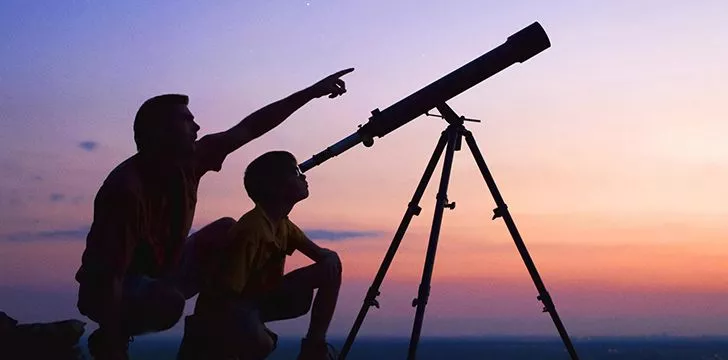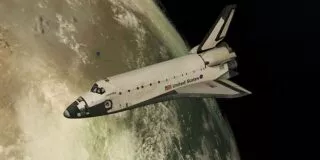Have you ever looked up and wondered what that shimmering ball of light in the sky actually is, or how it looks?
The telescope, a device loved by so many people from professional astronomers to back-yard stargazers, has been around for centuries.
But how much do you actually know about telescopes?
Here we’re going to look at 24 facts about the gateway to the stars.
The earliest known illustration of a telescope is actually a drawing done in a letter done in 1609. It was drawn by Giovanbattista Della Porta.
The Hubble Space Telescope (HST) travels around the earth at almost 17,000 mph (27,300 km/h), which is just over 22 times faster than the Land Speed World Record for the fastest car ever.
The HST is a staggering 43.5 ft (13.2 meters) long and weighs 24,000 lbs (10,886 kg).
Telescope is a derivation of the Latin phrases tele, which means at a distance, and scopium, which means to examine or look.
Galileo is often said to have caused his blindness by looking at the sun through his telescope, although this cannot be confirmed, it is now believed to be caused a combination of glaucoma and cataracts.
In March 2016, the Kepler Space Telescope saw a star measuring 500 times bigger than the sun, a supernova around 1.2 billion light-years away.
During the Apollo Moon landing mission in 1969, Pope Paul actually watched the moon inside the Vatican Observatory before watching the televised moonwalk.
A term used when discussing telescopes is First Light; this is the phrase used to describe the first moment a telescope sees the sky.
When building a telescope, the main concern is usually clarity rather than distance, we can see millions of light-years away but the clarity of planets, their surfaces and characteristics, and other astronomical wonders are a bigger drive.
In a list of the top 10 world’s largest telescopes, Chile alone has 50% of the list. They also have the lower 50% with 4 being in the Paranal Observatory.
In the movies, pirates are often seen scanning the horizon with a device known as a Pirate Telescope. These were not actually invented by pirates – they were usually stolen from ship Captains when their ship was commandeered.
We all know the “typical” telescope, an optical device used for magnification, but did you know there are other types of telescopes? These include infrared, x-ray, and ultraviolet telescopes.

Karl Guthe Janksy invented the world’s first Radio Telescope in 1930; the Bell Telephone Laboratories employee built the merry-go-round to help identify the cause of static interference for radios.
The Compton Gamma Ray Observatory (CGRO) was designed for photon detection and cost a staggering $617,000,000 to develop. It was sent into space in April of 1991.
Early use of telescopes in the 17th Century was to spot incoming merchant ships to allow them to have the upper hand for trading.
The Leviathan of Parsonstown, built in Ireland, was the world’s largest telescope for over 30 years. It had an aperture of 72 inches and the mirror used weighed around 3 tons.
Earth 2.0 is a name given to a planet that is claimed to be one of the most similar to Earth itself, it was discovered in 2015 using the Kepler Telescope.
A well-known image called the Pillars of Creation was taken by the HST. This may actually not exist anymore; due to the speed of light, it is thought we will be able to see it for a millennium more.
Comedian, actor and all-around funny man Jack Black’s parents actually worked on the HST as satellite engineers.
Canada’s first space telescope; the Microvariability and Oscillations of Stars (MOST), is nicknamed the Humble Space Telescope.
The largest operating telescope is actually found in the Canary Islands, known as The Gran Telescopio Canarias. The telescope took over a decade to finish building and is 34 feet wide (10 meters).
There is actually a binocular-like telescope composed of 2 telescopes parallel to one another and is aptly named Large Binocular Telescope.
The Hubble Space Telescope was named after astronomer Edwin P. Hubble in 1983.
In 2001, the Japanese underground Super-Kamiokande Observatory had a major failure that turned out to be catastrophic. One of the photomultiplier tubes exploded, which led to a large proportion of the other 11,200 blowings.
So there we have it, 25 facts about the telescope, from its initial documented appearance to the mind-blowing size of the largest modern telescopes, they really are incredible!











